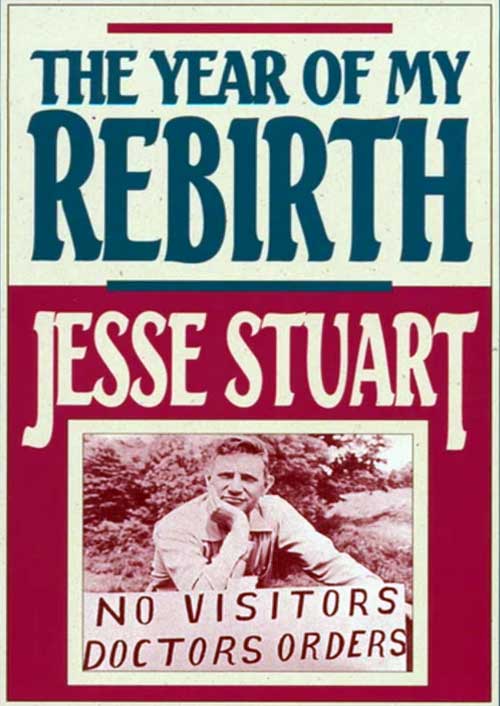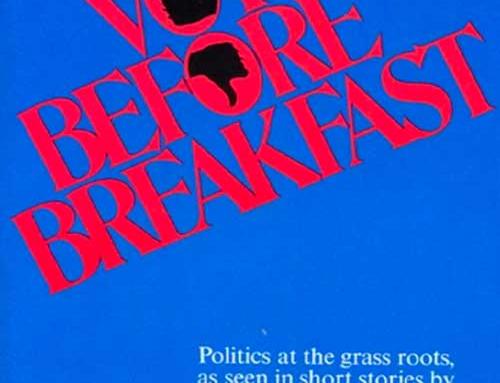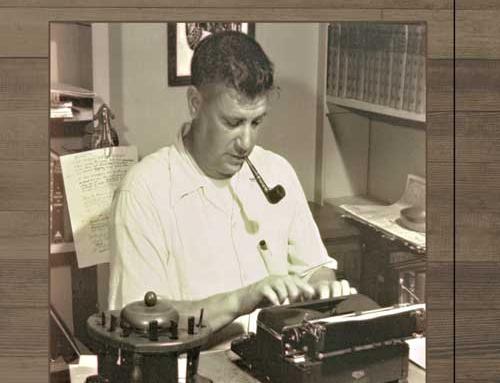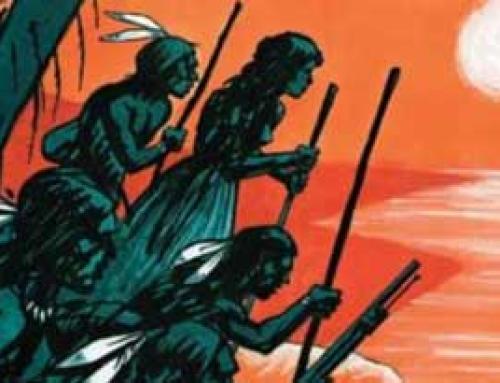Lots of folks have been sick this winter. If you have a friend or loved one recovering from illness or surgery, Jesse Stuart’s “The Year of My Rebirth” would be a helpful gift.
Stuart’s message in this well-known book is that no person can really begin living until he has come close to dying. As a young man, Stuart lived at top speed. Then, in 1954, at age 48, rushing from a lecture in Murray, Kentucky, to catch a chartered plane to make another talk in Illinois, he was struck down by a severe heart attack, and he almost died.
 “The Year of My Rebirth” is the record of the year that followed. From a big, aggressive man who loved hard work and physical activity, Stuart was reduced to an invalid who could not tie his shoes. Carried back to the Kentucky hill country where he was born, he became a prisoner in his home. A “No Visitors” sign in the driveway repelled friends and family, so Stuart turned to new friends: the three-legged possum who lived beneath the kitchen, the peewees nesting by the kitchen door, the baby-handed mole tunneling under the yard. His journal of recovery is alive with the awareness of a man who found time not only to live life but to examine it.
“The Year of My Rebirth” is the record of the year that followed. From a big, aggressive man who loved hard work and physical activity, Stuart was reduced to an invalid who could not tie his shoes. Carried back to the Kentucky hill country where he was born, he became a prisoner in his home. A “No Visitors” sign in the driveway repelled friends and family, so Stuart turned to new friends: the three-legged possum who lived beneath the kitchen, the peewees nesting by the kitchen door, the baby-handed mole tunneling under the yard. His journal of recovery is alive with the awareness of a man who found time not only to live life but to examine it.
Physically, Stuart was like a child. He had to learn again to stand alone and then to walk and, finally, to use his arms and hands and even to put food in his mouth. Mounting a short flight of steps was exhausting. He subscribed to a new set of values in which the blades of grass and daisies in a pasture had more intrinsic worth than the expensive cattle that fed on them, and nature’s annual resurrection in spring seemed proof of the presence of God and the promise of heaven.
For other heart attack survivors, Stuart has some cautionary words: Much more than the heart can be affected. His vision dropped abruptly from 20-20 to the point where he was unable to read newspaper headlines without the help of glasses. And the months immediately following an attack can bring with them bouts of deep depression.
In compensation, as Jesse Stuart slowly recovered strength, he felt reborn and cast in a different mold: more tolerant, more gentle, more reflective than before. Says Stuart, “My world had been a thousand friends in a hundred cities, ten cups of coffee and loud talk until three in the morning. Now my world was reduced to my home, my farm, and my hills. I lived more closely with my wife, my daughter, and my animal friends. I thought more deeply of my God.”
And implicit throughout the book is Stuart’s strongly held feeling that his close brush with death was a valuable learning experience.
In his later years, Jesse Stuart and several members of his family became active spokespersons for the American Heart Association. In the fall of 1963, working with the American Heart Association, Stuart made a promotional film, “Heart of a Town,” narrated by the actor Edward G. Robinson. In 1991, the Jesse Stuart Foundation republished a new oversized, easy-to-read edition which remains in print today. It was especially fitting that this edition was sponsored by one of Kentucky’s most respected cardiologists, Dr. Charles Rhodes. Out of respect for Stuart’s work, the Kentucky Affiliate of the American Heart Association endorsed our 1991 reprint of “The Year of My Rebirth.”
“The Year of My Rebirth” is available for purchase on this website and at the JSF Bookstore and Gift Shop at 4440 13th Street in Ashland. For more information, call 606-326-1667 or email jsf@jsfbooks.com.
By James M. Gifford
JSF CEO & Senior Editor
Lots of folks have been sick this winter. If you have a friend or loved one recovering from illness or surgery, Jesse Stuart’s “The Year of My Rebirth” would be a helpful gift.
Stuart’s message in this well-known book is that no person can really begin living until he has come close to dying. As a young man, Stuart lived at top speed. Then, in 1954, at age 48, rushing from a lecture in Murray, Kentucky, to catch a chartered plane to make another talk in Illinois, he was struck down by a severe heart attack, and he almost died.
“The Year of My Rebirth” is the record of the year that followed. From a big, aggressive man who loved hard work and physical activity, Stuart was reduced to an invalid who could not tie his shoes. Carried back to the Kentucky hill country where he was born, he became a prisoner in his home. A “No Visitors” sign in the driveway repelled friends and family, so Stuart turned to new friends: the three-legged possum who lived beneath the kitchen, the peewees nesting by the kitchen door, the baby-handed mole tunneling under the yard. His journal of recovery is alive with the awareness of a man who found time not only to live life but to examine it.
Physically, Stuart was like a child. He had to learn again to stand alone and then to walk and, finally, to use his arms and hands and even to put food in his mouth. Mounting a short flight of steps was exhausting. He subscribed to a new set of values in which the blades of grass and daisies in a pasture had more intrinsic worth than the expensive cattle that fed on them, and nature’s annual resurrection in spring seemed proof of the presence of God and the promise of heaven.
For other heart attack survivors, Stuart has some cautionary words: Much more than the heart can be affected. His vision dropped abruptly from 20-20 to the point where he was unable to read newspaper headlines without the help of glasses. And the months immediately following an attack can bring with them bouts of deep depression.
In compensation, as Jesse Stuart slowly recovered strength, he felt reborn and cast in a different mold: more tolerant, more gentle, more reflective than before. Says Stuart, “My world had been a thousand friends in a hundred cities, ten cups of coffee and loud talk until three in the morning. Now my world was reduced to my home, my farm, and my hills. I lived more closely with my wife, my daughter, and my animal friends. I thought more deeply of my God.”
And implicit throughout the book is Stuart’s strongly held feeling that his close brush with death was a valuable learning experience.
In his later years, Jesse Stuart and several members of his family became active spokespersons for the American Heart Association. In the fall of 1963, working with the American Heart Association, Stuart made a promotional film, “Heart of a Town,” narrated by the actor Edward G. Robinson. In 1991, the Jesse Stuart Foundation republished a new oversized, easy-to-read edition which remains in print today. It was especially fitting that this edition was sponsored by one of Kentucky’s most respected cardiologists, Dr. Charles Rhodes. Out of respect for Stuart’s work, the Kentucky Affiliate of the American Heart Association endorsed our 1991 reprint of “The Year of My Rebirth.”
“The Year of My Rebirth” is available for purchase on this website and at the JSF Bookstore and Gift Shop at 4440 13th Street in Ashland. For more information, call 606-326-1667 or email jsf@jsfbooks.com.
By James M. Gifford
JSF CEO & Senior Editor




